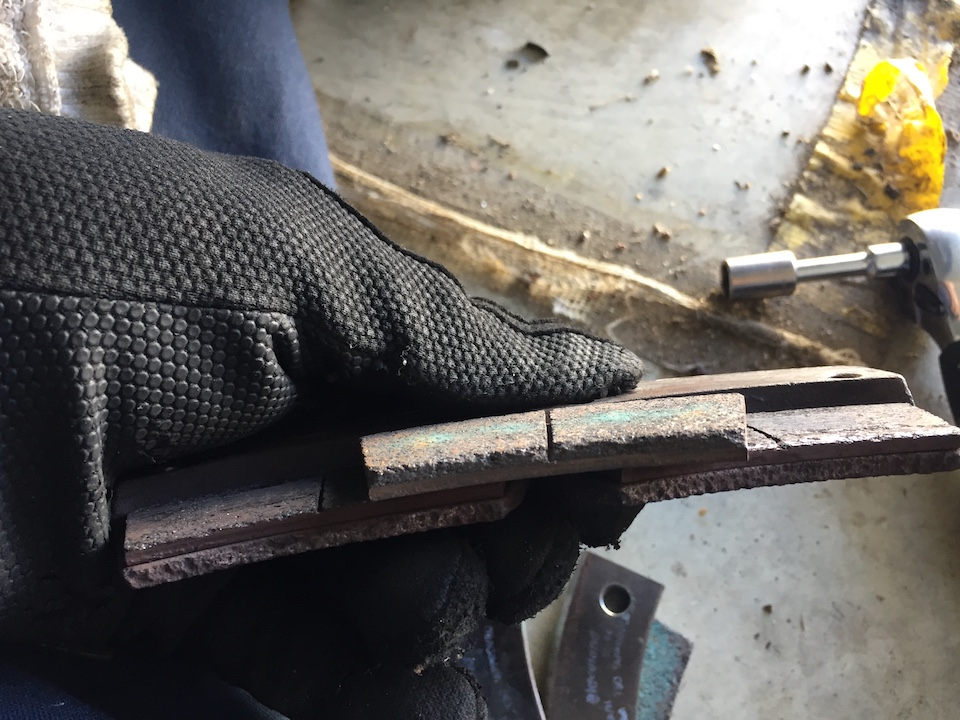A little "Brake 101"
The brakes system is semi-closed. The reservoir is vented.
There will be a very small amount of fluid (5606) lost to the caliper walls
every time the brakes are used. As the rotors and pads wear, the caliper puck
moves further out to make up for the wear. The area it moves into is subject to
dirt and corrosion. Over a period of time this area is no longer suitable to
provide a proper seal and more fluid is lost on each application of the brakes.
The manufacturer has determined that a minimum pad thickness
of 0.100" and minimum rotor thickness will provide adequate margin for proper
operation of the brakes. The frugal flyer will buy the Rapco pads because they
have a built in wear indicator making that particular dimension easily
identified on a preflight. The fluid reservoir might be a good indicator of
brake condition simply by a low level even if there are no leaks since the pads
will provide a larger caliper reservoir due to wear of the pads and rotor. Below
you can see the wear indicator depth on my pads, proving that I got my money's
worth.

Leaks requiring immediate attention should be discernible to
the most casual observer. Disc minimum thickness is published in the brake
manufacturers service manual available online. If you are reading this there is
no excuse for not possessing the proper document. In any event they should be
measured at each annual. The service documents give other requirements for
continued airworthiness of the brake system.
Several years ago I started recording disc thickness at annual
for all aircraft. A rough average disc wear of 0.003" to 0.004" was normal for
all aircraft with about 75 to 100 hours. That comes to about 1000 hours expected
disc/rotor life. I have seen many unique methods attempting to eke out just a
few more hours. The time and effort involved never seemed to justify the effort
to circumvent good brake care practice. A new disc is about $100 or $0.10/hour.
Yes using the parking brake can create a condition where the
rotors will warp. I use the parking brake to set the chocks/tie it down then
release it.
Got brake master cylinder woes? Check out this page
HERE.
Click HERE to read about a
modern synthetic, flame resistant alternative to 5606 hydraulic fluid that is
used by the military, MIL-H-83282.
